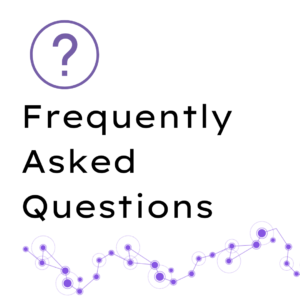How TruContext Transforms Smart City Cybersecurity
The vision of the smart city is compelling: interconnected systems that optimize traffic flow, reduce energy consumption, enhance public safety, and improve quality of life for millions of residents. From intelligent traffic lights that adapt to real-time conditions to IoT sensors monitoring air quality, smart cities represent the future of urban living. However, this interconnected utopia comes with a dark side that city planners and cybersecurity professionals are only beginning to fully understand.
As we advance deeper into 2025, the cybersecurity challenges facing smart cities have reached a critical inflection point. Recent reports indicate a continued surge of city and county governments falling victim to serious cybersecurity incidents, with catastrophic ransomware attacks capable of grinding all operations to a complete halt and impacting critical health and safety systems like 911 dispatch centers. The stakes have never been higher, and traditional cybersecurity approaches are proving inadequate for the complex, interconnected nature of smart city infrastructure.
This is where Visium’s TruContext platform emerges as a game-changer, offering a revolutionary approach to smart city cybersecurity that leverages graph analytics and contextual intelligence to secure the intricate web of relationships that define modern urban infrastructure.
The Smart City Security Paradox: Connection Creates Vulnerability
Smart cities are built on the principle of connectivity. Every traffic sensor, surveillance camera, environmental monitor, and emergency system is designed to communicate with other components in the urban ecosystem. By 2030, experts predict over 40 billion IoT devices worldwide, with a significant portion deployed in smart city infrastructure. While this connectivity enables unprecedented efficiency and responsiveness, it also creates what cybersecurity experts call an exponentially expanding “attack surface.”
The challenge is not just the sheer number of connected devices, but the complex relationships between them. A compromised smart meter can potentially provide access to the energy management system. A hijacked traffic camera might serve as a stepping stone to the city’s emergency response network. A vulnerable IoT sensor in a water treatment facility could become the entry point for an attack on critical infrastructure that serves hundreds of thousands of residents.
The Human Factor: Where Technology Meets Reality
Recent analysis of smart city cybersecurity incidents reveals that humans remain the weakest link in the security chain. Despite regular training and awareness efforts, thousands of organizations have employees who fall victim to social engineering each year, compromising their credentials through successful phishing attempts. In the smart city context, this human vulnerability is amplified by the geographic spread of municipal employees who require remote access to critical systems through VPNs – one of the most common root points of compromise that result in catastrophic ransomware events.
The 2025 cybersecurity landscape has shown us that even well-intentioned employees can succumb to MFA fatigue, approving unprompted sign-on attempts that provide attackers with the keys to the digital kingdom. When that kingdom includes traffic management systems, emergency services, and critical infrastructure, the consequences can be life-threatening.
Real-World Threats: Learning from Recent Incidents
The threat to smart cities is not theoretical. The infamous Mirai botnet attack of 2016 demonstrated how IoT devices with default credentials could be weaponized to create massive distributed denial-of-service attacks that disrupted major internet services. While this attack predates the current smart city boom, it provided a chilling preview of what’s possible when interconnected devices are compromised at scale.
More recently, cybersecurity experts have identified emergency alerts, street video surveillance, and smart traffic signals as among the riskiest smart city technologies. These systems, which are designed to protect and serve the public, become potential weapons in the hands of malicious actors. Consider the implications of a compromised emergency alert system spreading false information during a crisis, or hijacked traffic signals causing chaos during rush hour.
The sophistication of these attacks is also evolving. Cybercriminals are now leveraging hijacked smart meters to launch ransomware attacks on Energy Management Systems (EMS), demonstrating how seemingly innocuous IoT devices can become the foundation for attacks on critical infrastructure. The interconnected nature of smart city systems means that a breach in one area can quickly cascade throughout the entire urban ecosystem.
TruContext: Bringing Order to the Chaos of Smart City Security
Traditional cybersecurity tools were designed for simpler, more linear network architectures. They struggle to understand and protect the complex, multi-dimensional relationships that define smart city infrastructure. This is where TruContext‘s revolutionary approach to cybersecurity becomes essential.
TruContext leverages a patented scalable multi-layered graph database to map and understand the intricate relationships between every component in a smart city ecosystem. Unlike traditional security tools that view each device or system in isolation, TruContext sees the connections, dependencies, and potential attack paths that span the entire urban infrastructure.
Visualizing the Invisible: Graph Analytics for Smart Cities
Imagine being able to see your entire smart city infrastructure as a living, breathing network of relationships. TruContext makes this possible by creating a comprehensive visual map that shows how traffic sensors connect to management systems, how emergency services integrate with communication networks, and how energy systems interact with transportation infrastructure.
This visualization capability is more than just a pretty picture – it’s a powerful tool for understanding risk. By mapping these relationships, TruContext can identify potential attack paths that would be invisible to traditional security tools. For example, it might reveal that a seemingly low-risk environmental sensor has network access that could be leveraged to reach critical emergency systems.
Predictive Intelligence: Stopping Attacks Before They Start
TruContext goes beyond reactive security monitoring to provide predictive intelligence that can identify and neutralize threats before they impact city services. By continuously analyzing the behavior of devices, users, and systems across the smart city ecosystem, TruContext can detect subtle anomalies that indicate the early stages of an attack.
For instance, if a traffic management system suddenly begins communicating with unusual external IP addresses, or if an environmental sensor starts generating data patterns that deviate from its historical baseline, TruContext can flag these activities as potential indicators of compromise. This early warning capability is crucial in the smart city context, where a successful attack can have immediate and far-reaching consequences for public safety and essential services.
Addressing the Unique Challenges of Municipal Cybersecurity
Smart cities face cybersecurity challenges that are unique to the public sector. Municipal governments often operate with limited budgets, aging infrastructure, and the need to balance security with public transparency and accessibility. TruContext addresses these challenges through several key capabilities:
Shared Infrastructure Security
Many cities and counties share technology resources with schools, utilities, and other public entities for financial efficiency. While this makes economic sense, it creates complex security challenges when one organization’s breach can impact multiple entities. TruContext‘s graph analytics can map these shared relationships and help organizations understand their interconnected risk profile.
When a security incident occurs, TruContext can quickly identify which shared systems might be affected and help coordinate response efforts across multiple organizations. This capability is particularly valuable given the sensitivity around Freedom of Information Act (FOIA) requests that can complicate incident response communications between public entities.
Geographic Distribution Management
Municipal employees are often geographically distributed across multiple facilities and frequently work in the field. This creates challenges for both security monitoring and incident response. TruContext‘s real-time monitoring capabilities can track user behavior and system access across all locations, identifying anomalous activities regardless of where they originate.
During a security incident, TruContext‘s comprehensive mapping can help IT teams prioritize their response efforts and identify which physical locations require immediate attention, optimizing the use of limited resources during critical situations.
The Future of Smart City Security: Proactive, Intelligent, and Contextual
As smart cities continue to evolve and expand, the cybersecurity challenges will only become more complex. The traditional approach of deploying point security solutions and hoping for the best is no longer viable. Cities need a comprehensive, intelligent approach that can understand and protect the intricate web of relationships that define modern urban infrastructure.
TruContext represents the future of smart city cybersecurity – a future where security is proactive rather than reactive, intelligent rather than rule-based, and contextual rather than isolated. By leveraging the power of graph analytics and contextual intelligence, TruContext enables cities to build secure, resilient infrastructure that can withstand the sophisticated threats of the digital age while continuing to deliver the benefits that make smart cities so compelling.
Building Resilient Cities for Tomorrow
The promise of smart cities – more efficient, sustainable, and livable urban environments – is too important to be derailed by cybersecurity concerns. However, realizing this promise requires a fundamental shift in how we approach urban cybersecurity. We must move beyond the traditional perimeter-based security model to embrace a more sophisticated, relationship-aware approach that can protect the complex, interconnected systems that define the modern city.
TruContext provides the foundation for this transformation, offering city leaders and cybersecurity professionals the tools they need to build truly secure smart cities. By understanding and protecting the relationships that connect every component of urban infrastructure, TruContext helps ensure that the cities of tomorrow are not just smart, but also secure and resilient.
The choice facing city leaders today is clear: continue with traditional cybersecurity approaches and accept the growing risk of catastrophic breaches, or embrace the power of contextual intelligence to build cities that are both smart and secure. The future of urban living depends on making the right choice.



